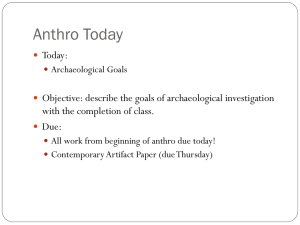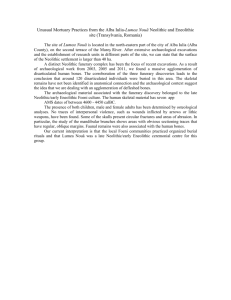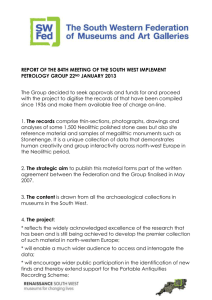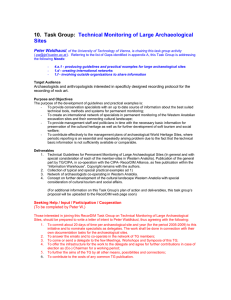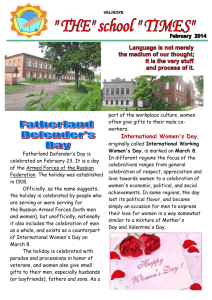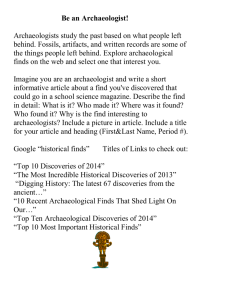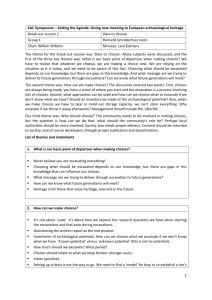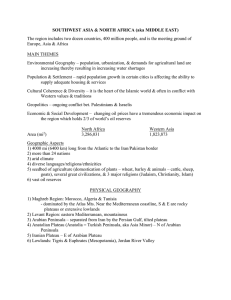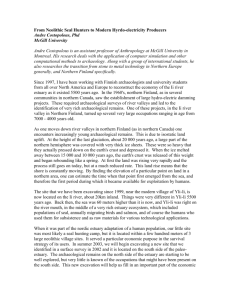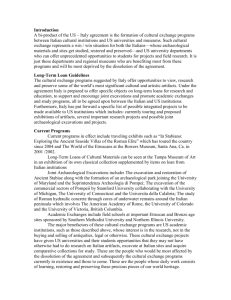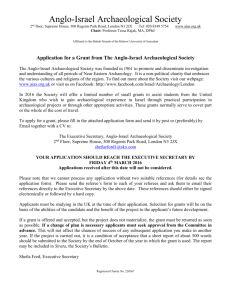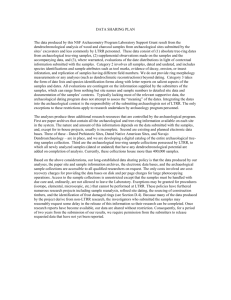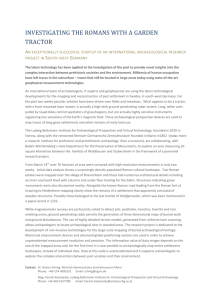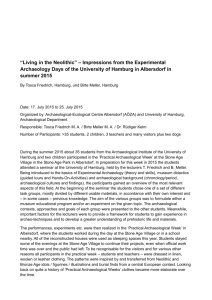From the Neolithic to the Bronze Age: Recent Archaeological
advertisement
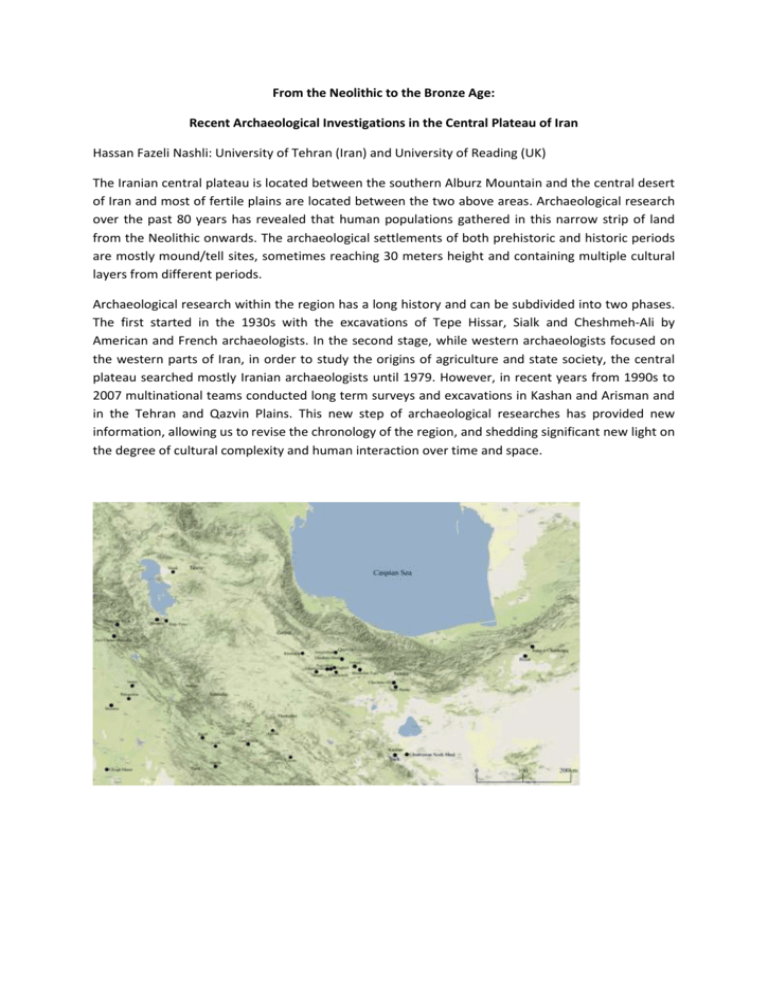
From the Neolithic to the Bronze Age: Recent Archaeological Investigations in the Central Plateau of Iran Hassan Fazeli Nashli: University of Tehran (Iran) and University of Reading (UK) The Iranian central plateau is located between the southern Alburz Mountain and the central desert of Iran and most of fertile plains are located between the two above areas. Archaeological research over the past 80 years has revealed that human populations gathered in this narrow strip of land from the Neolithic onwards. The archaeological settlements of both prehistoric and historic periods are mostly mound/tell sites, sometimes reaching 30 meters height and containing multiple cultural layers from different periods. Archaeological research within the region has a long history and can be subdivided into two phases. The first started in the 1930s with the excavations of Tepe Hissar, Sialk and Cheshmeh-Ali by American and French archaeologists. In the second stage, while western archaeologists focused on the western parts of Iran, in order to study the origins of agriculture and state society, the central plateau searched mostly Iranian archaeologists until 1979. However, in recent years from 1990s to 2007 multinational teams conducted long term surveys and excavations in Kashan and Arisman and in the Tehran and Qazvin Plains. This new step of archaeological researches has provided new information, allowing us to revise the chronology of the region, and shedding significant new light on the degree of cultural complexity and human interaction over time and space.

